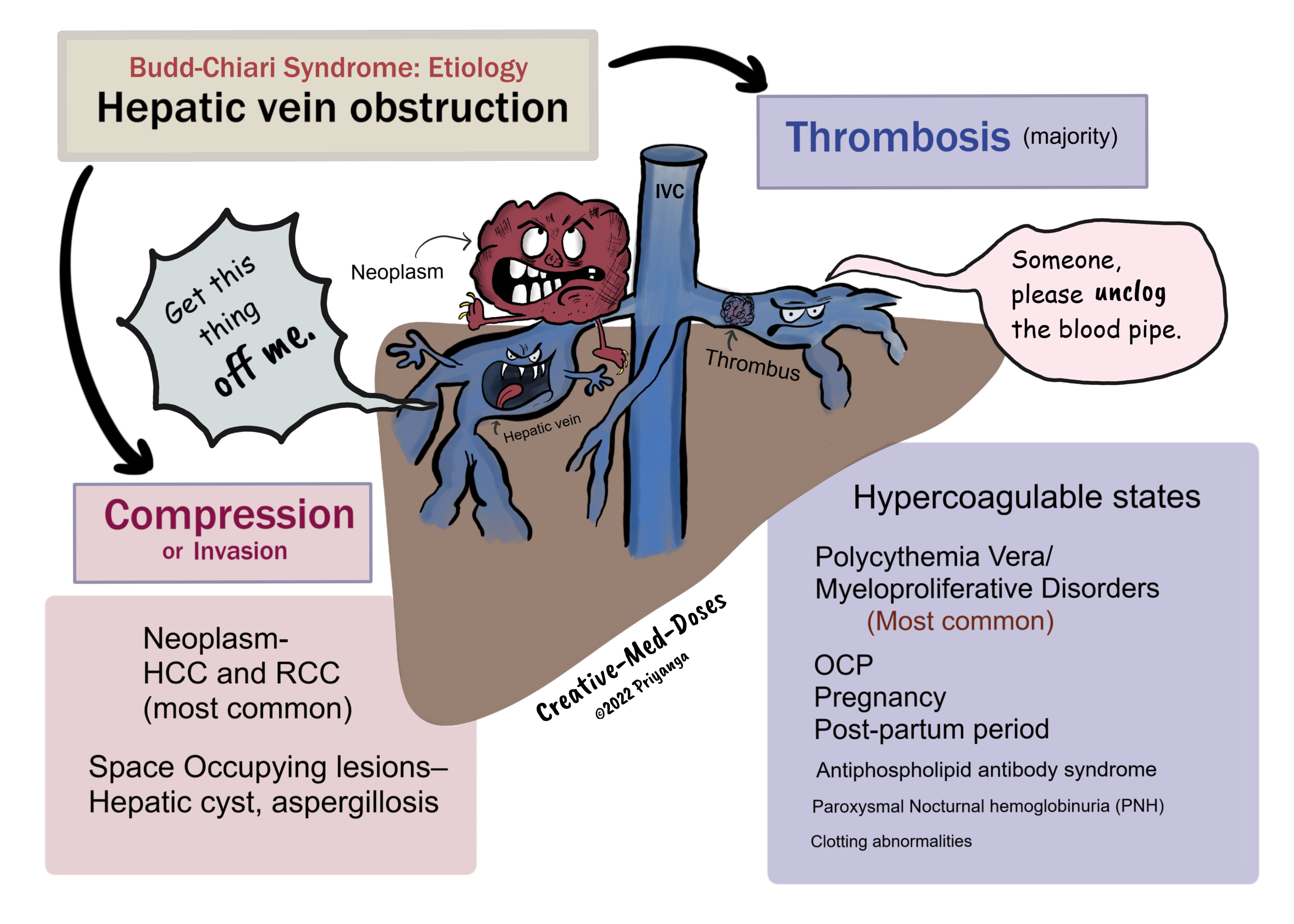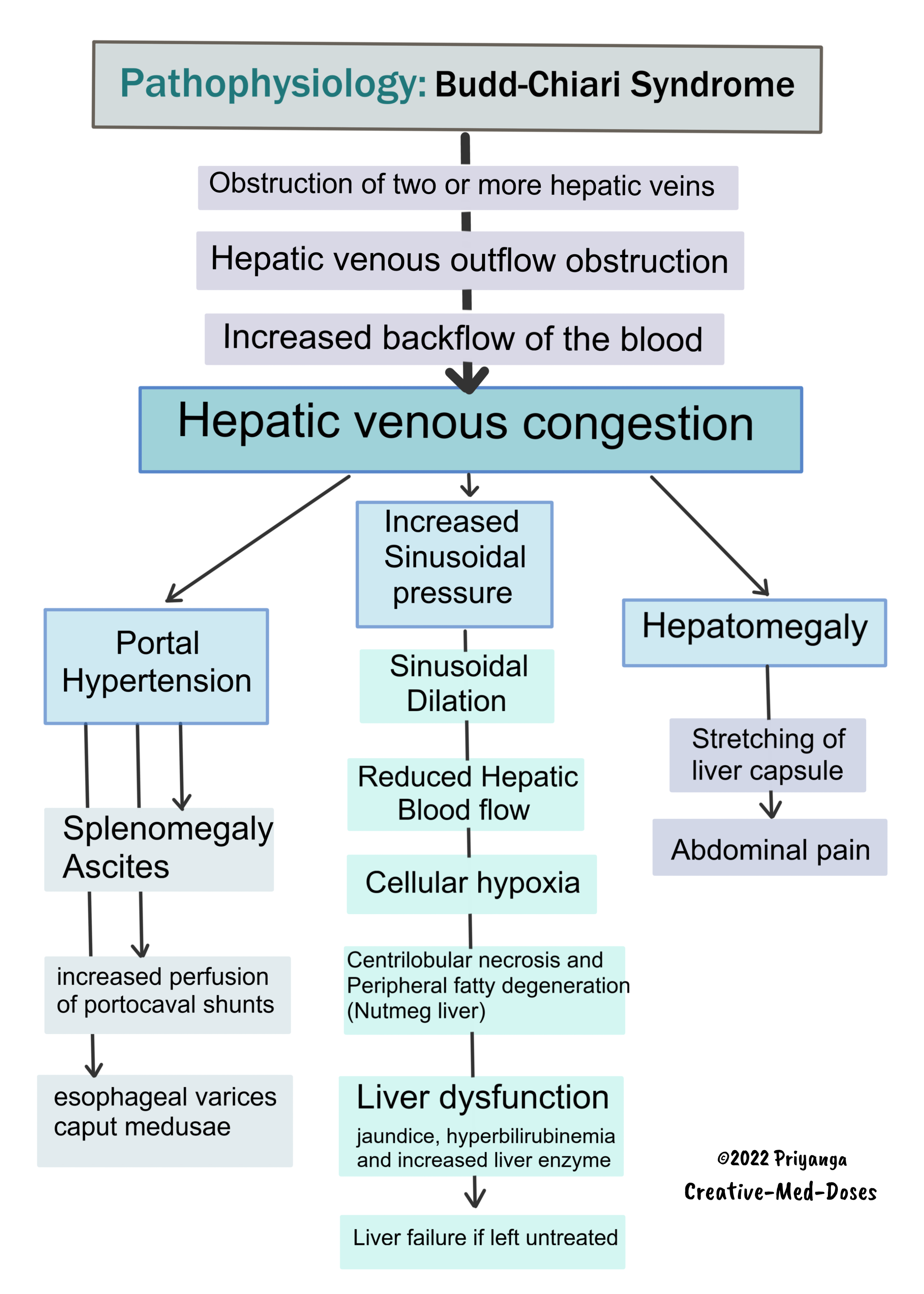Budd-Chiari Syndrome (BCS)
Budd-Chiari Syndrome (BCS) is a rare condition associated with obstruction of two or more major hepatic veins leading to hepatic venous outflow obstruction.
Etiology
Hepatic Venous Outflow obstruction in Budd-Chiari Syndrome can be due to-
- Thrombosis of Hepatic veins
- Compression / Invasion of Hepatic veins
Thrombosis of Hepatic veins
The majority of cases with Budd-Chiari Syndrome are associated with hypercoagulable states causing thrombosis in hepatic veins. The most important causes are the following-
- Polycythemia Vera/ Myeloproliferative Disorders – nearly 50% of cases with Budd-Chiari Syndrome are associated with myeloproliferative disorders (Polycythemia vera is most common).
- OCP/ Pregnancy / Post-partum period – all are hypercoagulable states
- Antiphospholipid antibody syndrome
- Paroxysmal Nocturnal hemoglobinuria (PNH)
- Clotting abnormalities
Compression/Invasion of the Hepatic Vein
- Neoplasm- Intrabdominal malignancies (HCC and RCC are most common)
- Space Occupying lesions Liver – Hepatic cyst, aspergillosis
...

....
Pathophysiology
Obstruction of two or more hepatic veins →hepatic venous outflow obstruction→ impaired blood drainage to inferior vena cava→ increased backflow of the blood →hepatic venous congestion
Hepatic venous congestion→ hepatomegaly →stretching of liver capsule →abdominal pain and tender hepatomegaly
Hepatic venous congestion→ increases sinusoidal pressure → sinusoidal dilation →reduced hepatic blood flow→ cellular hypoxia→ centrilobular necrosis and peripheral fatty degeneration (Nutmeg liver) →liver dysfunction →jaundice, hyperbilirubinemia and increased liver enzyme→ liver failure if left untreated
..

..
Hepatic venous congestion may cause portal hypertension that can lead to
- splenomegaly
- ascites
- increased perfusion of portocaval shunts causing esophageal varices and caput medusae
Histopathology
- Centrilobular necrosis and peripheral fatty degeneration give the liver a “Nutmeg appearance”
- Sinusoidal dilation
Clinical features
- Abdominal pain, tender hepatomegaly (due to stretching of liver capsule), and ascites (the triad of Budd-Chiari Syndrome)
- Splenomegaly
- Jaundice
- Esophageal varices
- Caput Medusae
Diagnosis
- Clinical presentation and history
- Doppler Ultrasonography (initial investigation) – to visualize thrombosis or hepatic vein obstruction.
- CT/MRI – Confirmatory test (non-invasive modality of choice)
- Venography- gold standard test, reserved for cases with a high level of suspicion where other modalities have failed
Treatment
- Treat underlying cause
- Prevent propagation of the thrombus – use anticoagulants
- Restore blood flow by localized thrombolysis or angioplasty and Stenting
- TIPS (Trans jugular intrahepatic portosystemic shunt)
- Liver transplant in case of hepatic failure
Read more books here Books - Creative Med Doses
Revision for today Urinary Tract Infection: Treatment - Creative Med Doses